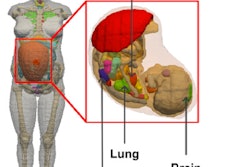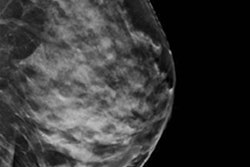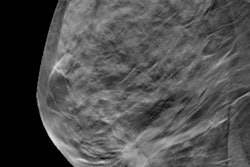Dear Women's Imaging Insider,
Radiologists are always concerned about radiation dose for all patients, but their concern for fetuses is even greater. Potentially hazardous effects of radiation to the pregnant patient and unborn child include possible spontaneous abortion, organ malformation, and mental retardation, to name a few. However, sometimes CT is necessary. How then do radiologists accurately estimate fetal absorbed dose when direct measurements of energy deposition cannot be performed?
A new study answers exactly that. Researchers from Switzerland created a computer model of pregnant patients, and then they estimated the maternal absorbed dose and fetal organ radiation dose for 30 pregnant patients referred for abdominal CT scans at their institution. It's a study you won't want to miss.
Also in your Women's Imaging Community, synthetic 2D images derived from digital breast tomosynthesis (DBT) are comparable with full-field digital mammography (FFDM), Spanish researchers found. Furthermore, synthetic images could replace FFDM in studies that use both modalities and reduce radiation dose by 45%, they said.
Speaking of breast cancer imaging, research from Italy shows DBT "modestly" increases radiation dose for patients compared with FFDM. However, don't let that be a deterrent in using DBT, the researchers said. Discover how much DBT increases radiation dose by clicking here.
In other breast cancer news, Norwegian researchers found breast cancer mortality rates have sunk over the past two decades. The drop was not driven by changes in risk factors but rather by improvements in cancer detection and management, they found. How much did breast cancer dip? Find out.
Last but not least, a team from Saudi Arabia and the Republic of Ireland investigated the quality of MRI scans. They found staffing issues, variable adherence to local rules and procedures, and lack of policies governing work practices contribute to major fluctuations in clinical practice. In fact, Saudi radiographers are less confident in their knowledge and practice of abdominal and pelvic MRI in comparison with radiographers practicing in the Irish Republic. What else did they find? Read more.
Be sure to head on over to the Women's Imaging Community to scope out other stories that will interest you. And as always, I enjoy hearing from you, so contact me anytime.




















